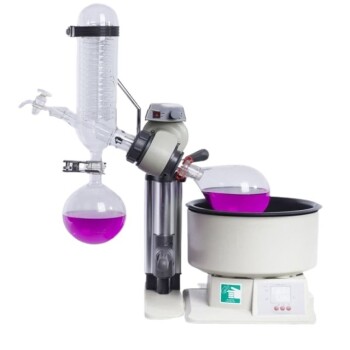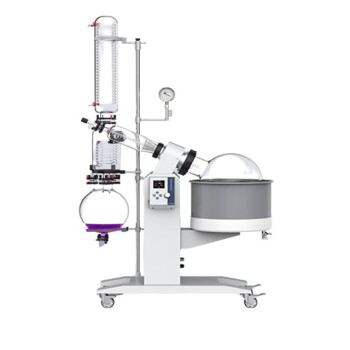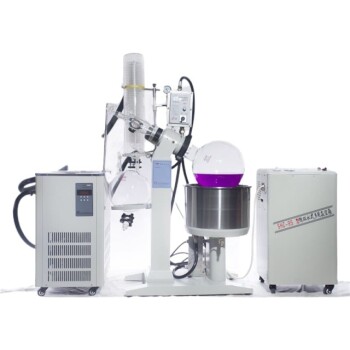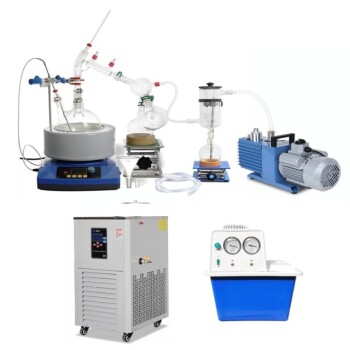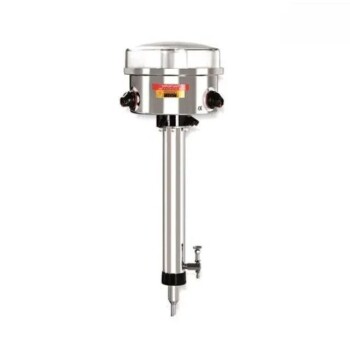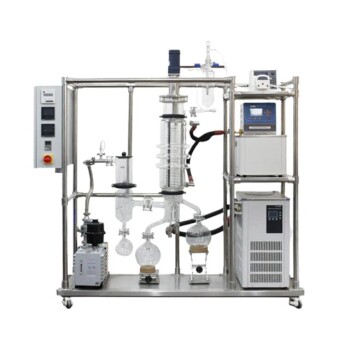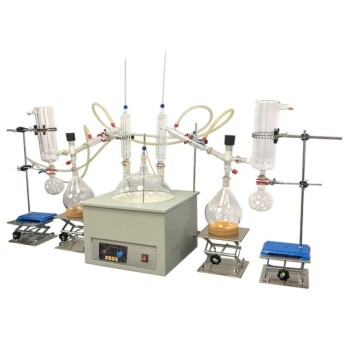Rotary evaporation is a common technique used in laboratories to remove solvents from samples under reduced pressure and controlled temperature. Knowing when the process is complete is crucial for ensuring the integrity of the sample and the efficiency of the solvent removal. The process is typically considered complete when no more solvent is visibly evaporating, and the system has been allowed to run for a few additional minutes to ensure all residual solvent is removed. Properly stopping the rotary evaporation process involves a series of steps to avoid damaging the equipment or losing the sample.
Key Points Explained:

-
Observation of Solvent Evaporation:
- Visual Cues: The primary indicator that rotary evaporation is nearing completion is the cessation of visible solvent evaporation. This can be observed by the lack of solvent droplets forming in the condenser and the absence of solvent in the receiving flask.
- System Continuation: Even after evaporation appears to have stopped, it is recommended to let the system run for a few more minutes. This ensures that any residual solvent, which might not be immediately visible, is fully removed.
-
Steps to Safely Stop the Rotary Evaporation Process:
- Remove the Flask from the Heat Bath: Use the joystick or manual controls to lift the flask out of the water bath. This prevents further heating of the sample.
- Open the Stopcock Fully: This step is crucial to release the vacuum gradually. Opening the stopcock too quickly can cause a sudden pressure change, potentially leading to sample loss or equipment damage.
- Turn Off the Rotor: Stopping the rotation of the flask ensures that the sample is no longer being agitated, which is important if the sample is sensitive to mechanical stress.
- Turn Off the Vacuum Source: Disconnecting the vacuum source is essential to bring the system back to atmospheric pressure. This should be done carefully to avoid any sudden pressure changes.
- Lift the Flask from the Water Bath: Ensure that the flask is completely removed from the water bath to prevent any residual heat from affecting the sample.
- Disconnect the Flask from the Adapter: Carefully remove the flask from the rotary evaporator to avoid any spills or breakage.
- Turn Off the Evaporator Completely: Finally, ensure that all components of the rotary evaporator are turned off, including the heat control, vacuum source, and cooling water.
-
Collection and Disposal of Solvent:
- Receiving Flask: The condensed solvent collected in the receiving flask is often pure enough to be reused. This not only saves on solvent costs but also reduces waste.
- Waste Disposal: Any solvent that is not reusable should be disposed of in the appropriate solvent waste container. Proper disposal is crucial for environmental safety and compliance with laboratory regulations.
-
Handling Fine Powders:
- Slow Pressure Equalization: If the sample is a fine powder, it is important to return the system to atmospheric pressure slowly. Rapid pressure changes can cause the powder to spray, leading to sample loss or contamination.
- Gentle Removal: After the pressure has been equalized, the flask should be removed gently to avoid disturbing the sample.
-
Cleaning and Maintenance:
- Anti-Splash Vessel: Clean the anti-splash vessel to prevent any cross-contamination between samples.
- Equipment Maintenance: Regular maintenance of the rotary evaporator, including cleaning and checking for wear and tear, ensures its longevity and reliable performance.
By following these steps and paying close attention to the visual cues, you can determine when the rotary evaporation process is complete and ensure a safe and efficient shutdown of the system.
Summary Table:
| Key Steps | Details |
|---|---|
| Observation of Solvent Evaporation | - No visible solvent droplets in condenser or receiving flask. |
| Steps to Safely Stop the Process | - Remove flask from heat bath, open stopcock, turn off rotor and vacuum. |
| Collection and Disposal of Solvent | - Reuse pure solvent; dispose of waste in appropriate containers. |
| Handling Fine Powders | - Equalize pressure slowly; remove flask gently to avoid sample loss. |
| Cleaning and Maintenance | - Clean anti-splash vessel; perform regular equipment maintenance. |
Need help optimizing your rotary evaporation process? Contact our experts today for tailored solutions!
